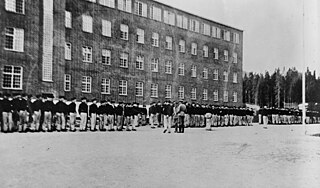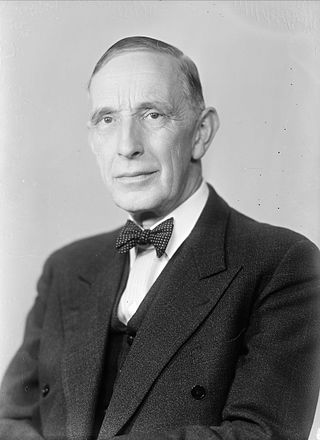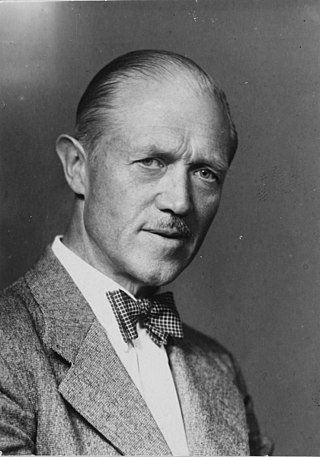
Grini prison camp was a Nazi concentration camp in Bærum, Norway, which operated between 1941 and May 1945. Ila Detention and Security Prison is now located here.

Waldemar Christofer Brøgger FRSE was a Norwegian geologist and mineralogist. His research on Permian igneous rocks of the Oslo district greatly advanced petrologic theory on the formation of rocks.

Francis Bull was a Norwegian literary historian, professor at the University of Oslo for more than thirty years, essayist and speaker, and magazine editor.

Johannes Mathias Sejersted Bødtker CBE was a Norwegian banker, art collector and patron of the arts.

Christian August Manthey Lange was a Norwegian educator, non-fiction writer and cultural attaché.

Anton Wilhelm Brøgger was a Norwegian archaeologist and politician.

Niels Christian Ursin Brøgger was a Norwegian essayist, novelist, journalist and critic.

Otto Lous Mohr was a Norwegian medical doctor.
Hjalmar Steenstrup was a Norwegian insurance agent, and Milorg pioneer and intelligence agent during World War II.

Alfhild Hovdan was a Norwegian journalist, and later tourist manager for the city of Oslo for more than forty years. She is known for initiating the tradition of the Trafalgar Square Christmas tree, a present from the city of Oslo to the people of London, in recognition of their assistance during World War II.

Trygve Friis Bull was a Norwegian lecturer and politician. He was a member of Mot Dag in the 1920s and 1930s, and contributed to the magazines Mot Dag, Clarté and Kontakt. During World War II he was imprisoned by the Germans, and incarcerated at the Grini and Sachsenhausen concentration camps. He was a politician for the Labour Party, a deputy representative to the Storting from 1957 to 1969, and later a politician for the Socialist Left Party. He was a member of the committee Norsk Språknemnd from its establishment in 1952 until 1972, and Norsk språkråd from 1972 to 1981.
Bjørn Føyn was a Norwegian zoologist, especially known for researching the genetics of algae.
Harald Krabbe Schjelderup was a Norwegian physicist, philosopher and psychologist. He worked with all three subjects on university level, but is best remembered as Norway's first professor of psychology.

Anatol Heintz was a Russo-Norwegian palaeontologist.
Edvard Welle-Strand was a Norwegian journalist and novelist.

Alexander Brinchmann was a Norwegian pediatrician. He was also a songwriter, novelist, playwright and crime fiction writer. He chaired the Norwegian Pediatric Society from 1933 to 1934 and the Norwegian Authors' Union from 1941 to 1945.

Kristian Schreiner was a Norwegian professor of medicine.
Alette Schreiner, née Falch was a Norwegian researcher.
Anton Wilhelm Brøgger was a Norwegian book printer.

Johan H. Andresen was a Norwegian industrialist and politician for the Conservative Party.














